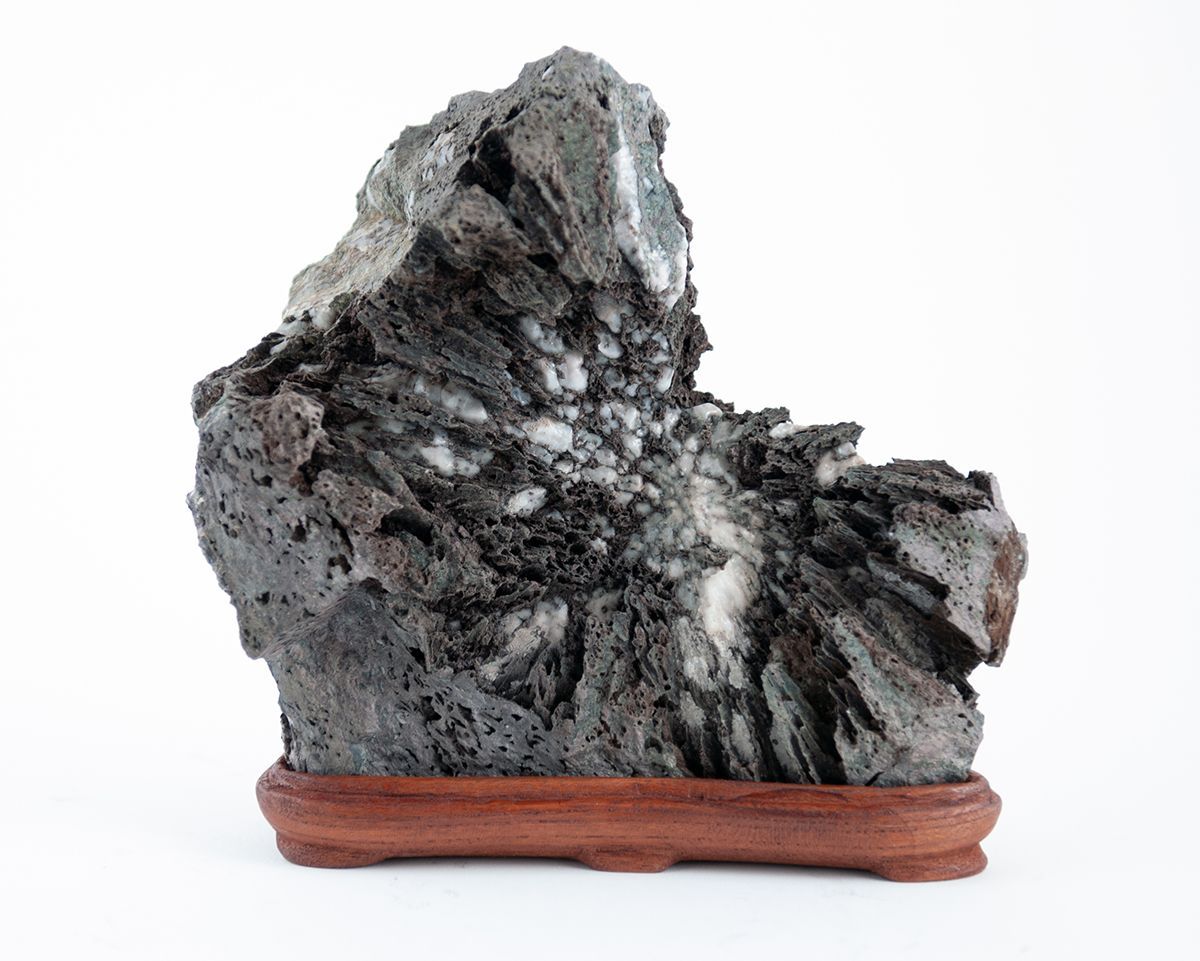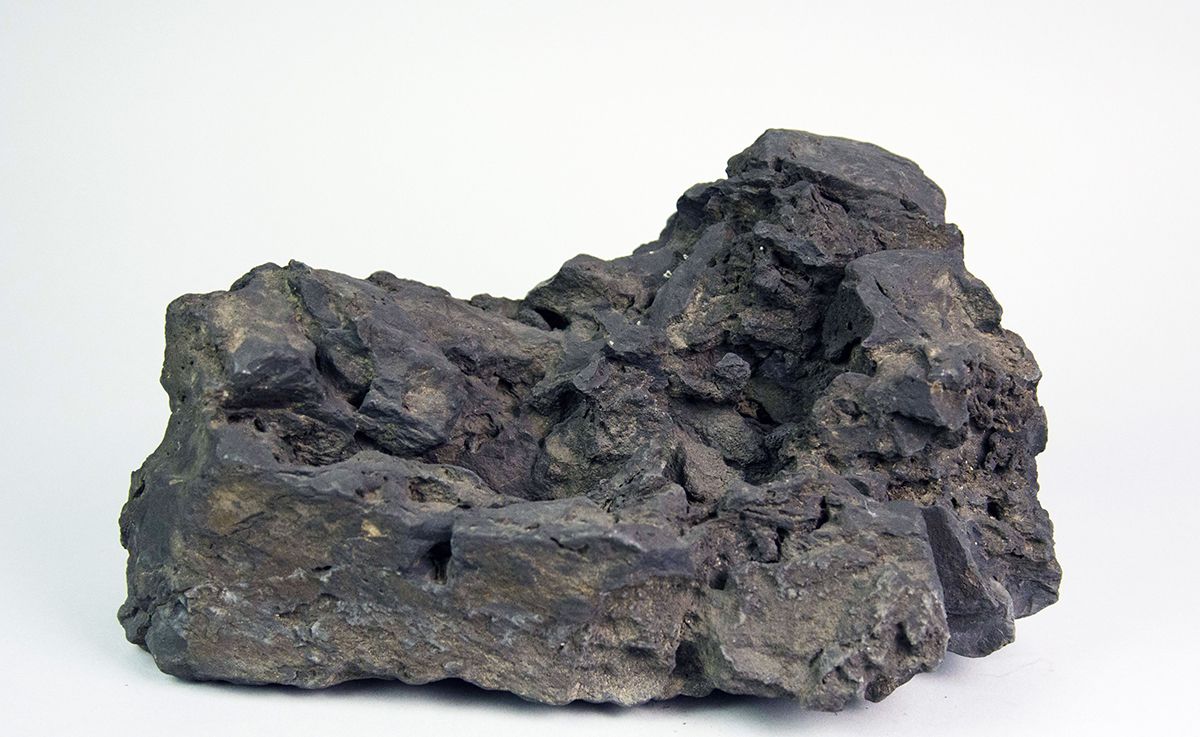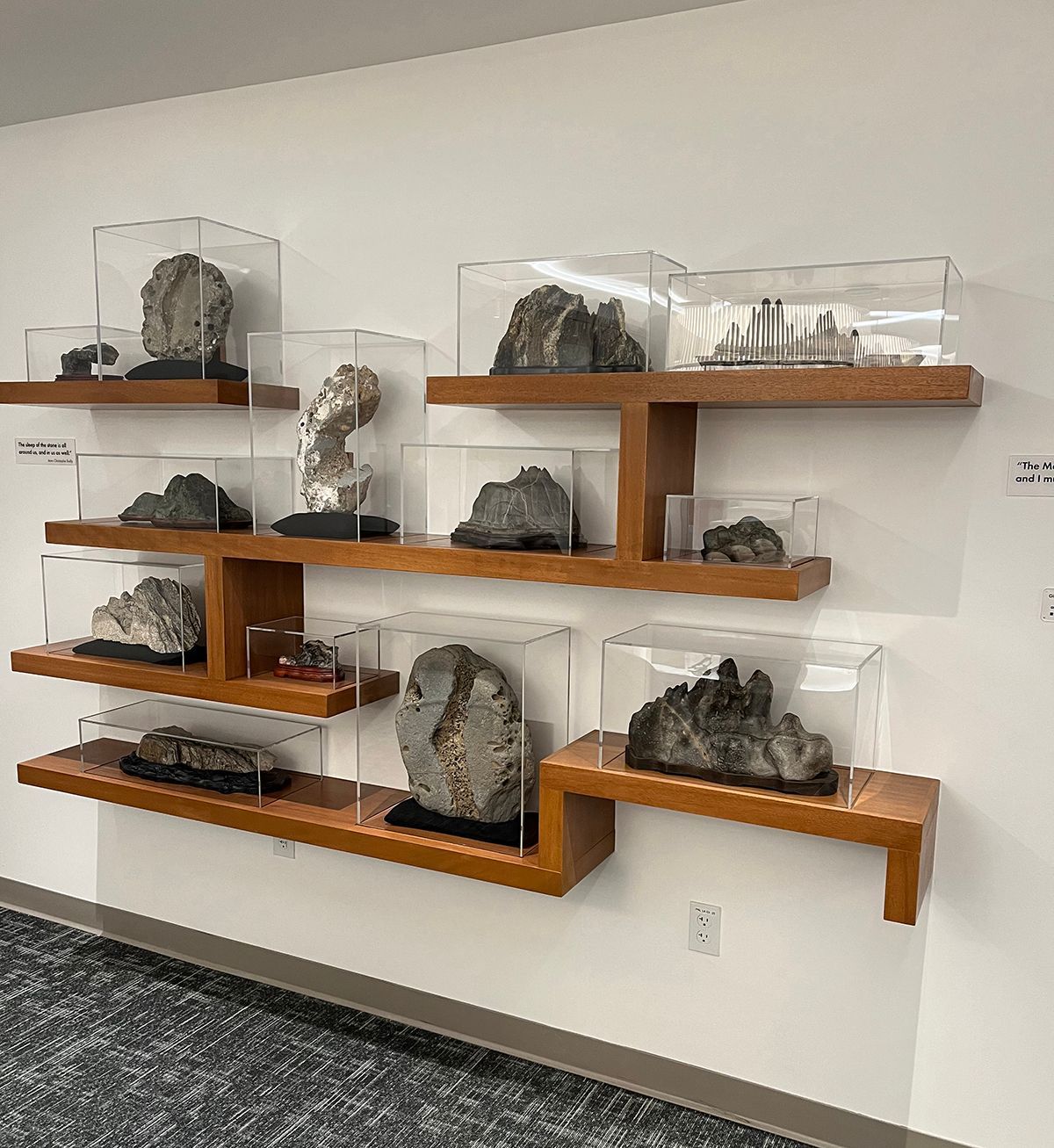My Collection: What to Do with It?
This is a discussion of the options available to collectors for the ultimate disposition of their viewing stones and accessories.
By Thomas S. Elias, January, 2024
Everyone who collects viewing stones, art, or other artifacts will eventually face the same fate. What do I do with my collection when I can no longer care for it? I have invested over 30 years in studying and collecting unusual and suggestive stones from many countries throughout the World. Every room in our home has viewing stones; even our garage is filled with them. This article will discuss this important decision that needs to be made and offer suggestions to foster stone appreciation practices in the future. Sadly, I have seen collectors ignore this reality in life only to see good collections discarded and not passed on to other collectors or suitable new homes. We have several options for our collections that should be considered.
Family and relatives: Our immediate response is to leave our precious stones collection to our spouse or family members. We must realize that spouses, children, grandchildren, and other relatives probably do not share our love of interesting stones. Don’t expect them to care for your stone collection with the same enthusiasm as you do. Instead, ask family members now if they want to have one or more of our stores as a keepsake. Let them indicate which stone or stones appeal to them. If they are involved in the decision-making, there is a greater chance that those stones will be treasured and better cared for. The stones will carry personal feelings that are important to the new owners.
Gifting to Individuals and Clubs: If you belong to a bonsai and stone club, you should consider gifting your collection, at least in part, to other members interested in stones. This can be as a gift to the individual or your local club to auction or raffle to others. My wife and I have gifted many lovely introductory and intermediate-level viewing stones to new members and to people who show an initial interest in stone appreciation. This is a good way to increase the community of people interested in this art form. On a few occasions, we have gifted a high-quality stone to another serious collector who freely shares information and experiences with us.
This large Japanese chrysanthemum flower stone was given to a good friend and serious collector of Asian stones.
Share your collection with those who share an interest in stones: If you have invested money to acquire quality stones over the years, you can offer to sell stones in your collection to others who share your interest. Personally, I want to see my better-viewing stones go to other serious collectors I know rather than to people who will not appreciate and care for them. Seeing that our most valuable stones are passed on to others who will care for them and then passed on to the next generation is one way to ensure they are not lost. At the same time, I can recoup some of my investment.
This point can be illustrated with a real-life experience. Years ago, when we were gathering information and acquiring stones in Japan to illustrate in our book,
Chrysanthemum Stones, the Story of Stone Flowers, I wanted to acquire two or three examples from Okutama, one of the rarest collection sites in Japan. I first had to be introduced to the owner by a respected leader in the Japanese stone community who could attest to my sincerity. He took me to the owner's home to meet him and see his private collection. The first hour of our meeting was a series of questions and discussions that would show I was qualified to be the future caretaker of some of his prized stones. At one point, I thought it might be easier to ask for his approval to marry his daughter than convince him to let me purchase one of his stones. Eventually, he realized how serious I was and offered several of his stones to me. These were illustrated in our book and are among my most treasured stones. We have remained friends with that collector ever since that time. The scenario has been repeated many times for us in Japan.

Natural and polished Okutama chrysanthemum flower stones.
We have acquired several nice Japanese stones with documentation that traces the stones back to early important collectors and people tied to the history and development of suiseki in Japan. Some of these valuable Japanese stones will likely be offered to serious collectors in Japan. An example of this is one of the historically important numbered stones once owned by the Iwasaki family that founded the Mitsubishi Corporation.

This Iwasaki family stone is numbered 31 on the bottom and is 29.5 cm wide, 15 cm high, and 19.5 cm deep.
Donations to Institutions: Only a limited number of museums, botanical gardens, or other institutions that maintain collections have a stated policy of acquiring, properly maintaining, and displaying viewing stones, suiseki, or scholars’ stones. Before you consider donating part or all of your stone collection to an institution, ask to see their board-approved collection policy. Almost all reputable institutions holding collections will have a policy that clearly states the specific types of objects they are committed to acquiring, curating, and occasionally displaying objects over the long term. Most institutions will normally accept only unrestricted donations. That is, the institution is not obligated to permanently maintain or occasionally display your donation. In fact, your donations might end up in indefinite storage or be sold or traded for objects closer to the institution's priorities. Before you donate to an institution, ask how often the institution plans and stages exhibitions of the stones in their holdings as opposed to allowing outside organizations to stage exhibits. Does the museum have proper temperature and humidity storage space for museum specimens, and does it clearly fit with the institution’s stated mission?You are not limited to institutions that are committed to assembling and maintaining a collection of stones. Gifts to university art departments can help develop a greater awareness of viewing stones for a wider audience.
In 2018, my wife and I donated a large, 16 x 30 x 8 inch, Taihu stone to Chapman University in Orange, California. This stone was a major feature of an exhibit, “A Matter of Course,” held in their Guggenheim Museum from August 13 to September 23, 2018. It was also featured in another later exhibition in the same venue. Between its use in exhibitions, the stone resides in the Art Department office, where faculty and students are exposed to it daily. In 2023, we made a second gift of five viewing stones to Chapman for use in a permanent display in a new conference room. Everyone using this room will have the opportunity to learn about viewing stones.
This large stone measures 16 x 30 x 8 inches and was donated to the university by Thomas S. Elias and Hiromi Nakaoji.

A collection of viewing stones on display in a new conference room at Chapman University.
Most museums prefer to receive as unrestricted gifts only the finest examples of a genre of art that they can acquire. The institution’s reputation depends upon the quality of its collection and how it is curated. During my career, I served as director of two major institutions with significant collections of importance. Each year, I received offers of donations of objects or entire collections. An assessment was made of how well they fit our mission and did we have the resources to maintain them according to museum standards. As a result, many of the donations were politely turned down. Like most similar institutions, we had limited museum-quality storage space and financial resources to maintain additional objects. We had to be very selective in accepting just exceptional objects that improved the quality of our collections. Every item in an institution’s collections has an annual maintenance cost.
I experienced a good example of this when I started my sixteen-year tenure as director of the U.S. National Arboretum. Soon after I arrived, I received a request for additional staff at our National Bonsai and Penjing Museum to care for the 500+ trees in the collection. This came at a time of no budget increases. In addition, I had to absorb inflationary costs within the same level of funding as the previous year. I had two independent outside panels of experts, one headed by John Naka and the second by Yuji Yoshimura, come to the arboretum at different times and assess the bonsai collection. Both panels arrived at the same conclusion. We had too many trees for the current staff and volunteers to maintain properly, and many of those in our possession would never meet the standards for this national collection. A third study determined the optimum number of trees that the current staff and volunteers could maintain. After obtaining the necessary approvals from the Department of Agriculture and Congress to deaccession and remove excess items, the collection was reduced from over 500 trees to about 225 trees. The excess trees were sold at public auctions, and the funds received were used to support the bonsai museum. As a result, the remaining trees received better care, and the quality of the trees on display improved.
Summary: Be realistic about the value and importance of your collection. I only plan to offer to donate a select number of my better stones to institutions, about one or two percent. Some will be donated to our local club to raise funds for future programs or to entice new members. The majority of our stones will be recirculated among serious collectors. This helps ensure the long-term future of viewing stone appreciation and that higher quality stones will be available to future collectors.

